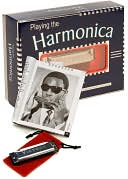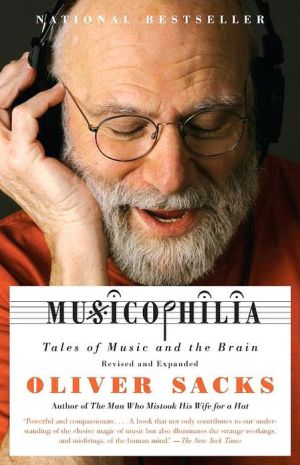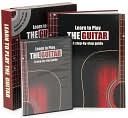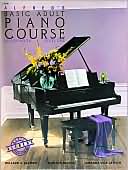The Healing Power of the Human Voice: Mantras, Chants, and Seed Sounds for Health and Harmony
A complete introduction to using the sounds of the voice to promote healing\ • Explains the emotional meanings and healing attributes of human vocal expression, from vowels and consonants to natural sounds such as laughter or sighs\ • Includes easy-to-follow vocal and breathing exercises\ • Contains chants and mantras from cultures around the world\ As infants and children we use our vocalizations to express our needs and emotions. As we grow older these vocalizations become confined to...
Search in google:
James D'Angelo introduces the concepts behind sound healing and the ways in which group singing can contribute to physical and mental health. Authentic chants and mantras from around the world, techniques for producing overtones, and simple movements disposing the body to inner harmony, health, and peace are included. Caduceus Magazine "James D'Angelo's joy in sound and silence, and his reverence for the sacred, burst through every sentence."
Chapter 8\ Natural Sounds\ There is such a wide range of natural vocal sounds, some caused by heightened emotions and others produced by the physical body such as yawning, sneezing, and belching. The vibrations of emotion can be turned into a medicine, shaking loose rigid patterns both in body and psyche. Such sounds are diffused through the body and even returned to it in circular fashion through the ears and the nervous system.\ One of the recommendations is that therapeutic soundwork be done at the beginning of the day and/or at the end of the workday. However, this is not to say it could not be done at other times. Natural sounds, because they are about releasing emotions safely, can be put to use at any moment of your waking life when you feel the situation calls for it. So if feelings of depression, anxiety, anger, sorrow, or fear began to surface in you, you could use soundwork to alleviate these conditions before they overwhelmed you.\ Rituals of Natural Sounds\ Yawning\ Yawning is not connected with our emotions. Most of us associate it with tiredness, a running down of energy. It need not be accompanied by sound because essentially it is an involuntary action of drawing in a very deep breath. In yawning the body mechanism is trying to replenish the loss of energy. That is, the deep, sudden rushes of air are providing a quick fix of oxygen, the Prana, revitalizing the whole system. Georges Gurdieff, a well-known teacher of Eastern esoteric knowledge, taught that we have within us large and small energy accumulators that are interdependent, and yawning is a means of pumping energy into the small accumulators.\ At the same time, yawning allows for the relaxation of the throat and tongue and the stretching of the jaw which makes it ideal as a preparation for toning, chanting, singing, and overtoning. If you really yawn, you have to open the mouth as wide as possible both for the deep intake and the release of air. It comes into the realm of natural sounds when you produce an AH on the outbreath, the AH forcing you to have a very wide and rounded mouth. The AH sound arising in the heart will also have the effect of undoing any tension.\ So either you act out yawning deliberately when tiredness comes over you or when you want the mechanisms of throat, tongue and jaw to be very relaxed prior to any voicework. In either case it is a healthful thing to do.\ Exercise\ 1. First practice opening your jaw as wide as possible while keeping a rounded mouth. Keep the jaw open for five seconds, imagining the sound of AH, and then close it slowly, keeping the mouth in the rounded position. Do this a few times before actually doing the yawning.\ 2. Now stand with your feet shoulder-width apart. Place your closed hands above your shoulders, facing forwards. Draw in air quickly and deeply through an ever-widening mouth, thrusting out your belly at the same time. Do not hold your breath. On the pushing out of the breath, make the sound of yawning. That is, produce a somewhat breathy AH sound from deep within your throat as though you were gargling. At the same time stretch out the arms sideways and upwards as you would for a natural yawn and open up the hands. Do this with eyes closed. Hold this outstretched position for a few moments, breathing normally. Slowly draw the hands back to the original position. Do it anywhere between 5 and 10 times.\ Humming\ In certain Eastern forms of meditation the sound of MMM closes such sacred seed syllables as OM, HUM, HAM and RAM, and in the West it forms an integral part of AMEN. It is the agent that helps to draw us into a profound state of quietude, relaxation and peace. Its comforting sound leads us deep within where we can find our true sense of self and therefore have great realizations and original ideas. In this respect it has a strong link with the brow chakra, the seat of insight. It is no accident that we emit a kind of humming sound when we make a discovery, when something is revealed to us or understood, or when we are in agreement or in tune with another person’s thoughts. The humming MMM is a life-affirming sound, one that almost universally mothers use to still their children as in a lullaby or adults produce in a state of contentment.\ The MMM consonant has a rich buzzing noise like a bumble bee that can bring great balance to our emotions, diminishing our egotistical side by slowing down the lesser, moving mind and tapping into higher mind. It can also shake loose in a safe and happy manner emotions that need releasing.\ Exercise\ To allow the natural sound of MMM to do its best work, draw in a slow, deep breath and try different tones from high to low to see which one resonates your head region most vibrantly. The object is to vibrate as much of your body as is possible, starting with the head region and moving down through the chest. See how far the sound can extend itself throughout the body. Make the sound strong, buzzy and bright by putting a smile on your face. To hear the sound in its full resonance, place the index fingers lightly over your ears with the rest of your hand embracing your face. This ritual can be done either sitting down or standing up. Have gaps between the hummings where you will breathe normally and observe what happens. Then take in another slow, deep breath just before emitting the next prolonged MMMM sounding. And so on. It would not be surprising if you felt like falling asleep. This would be a good sign of equanimity within yourself and would show that you have slowed down the physical and mental processes while balancing and purifying the emotions.
Acknowledgments Preface1 An Introduction to Sound Healing2 The Nature of Sound and Vibration3 The Power of the Resonating Voice4 Complements to the Resonating Voice5 Breath and the Resonating Voice6 Meaning of Vowels and Consonants7 General Instructions for Toning and Chanting8 Natural Sounds9 Discovering Your Fundamental Tone10 Mantras, Chanting, and Vocal Improvisation11 Toning the Chakras12 Overtoning Notes Resources Recommended Reading Index CD Directory
\ Caduceus Magazine"James D'Angelo's joy in sound and silence, and his reverence for the sacred, burst through every sentence."\ \ \ \ \ Jonathan Goldman“An excellent book full of pertinent information and practical exercises on the uses of the voice as a healing instrument. I highly recommend it!”\ \ \ Joshua Leeds“Humans have a unique, dual relationship with sound—we can both hear it as well as make it. James D’Angelo is an engaging and insightful guide to the sounds we produce. The information and exercises in The Healing Power of the Human Voice provide great value for anyone seeking equanimity and wellness in their lives.”\ \ \ \ \ Don Campbell"Connects ancient theories with modern intuition through the vital and significant role of the voice."\ \ \ \ \ Russell Stone"This is an excellent starting point for beginners and also holds useful ideas and practices for those who have been involved in working with the voice for some time."\ \ \ \ \ Katherine Firth". . . [this book] is a profound reminder that the voice is both a resonator of the immanence of spirit as well as a pathway to transcendence."\ \ \ \ \ From the Publisher\ ". . . [this book] is a profound reminder that the voice is both a resonator of the immanence of spirit as well as a pathway to transcendence."\ \








